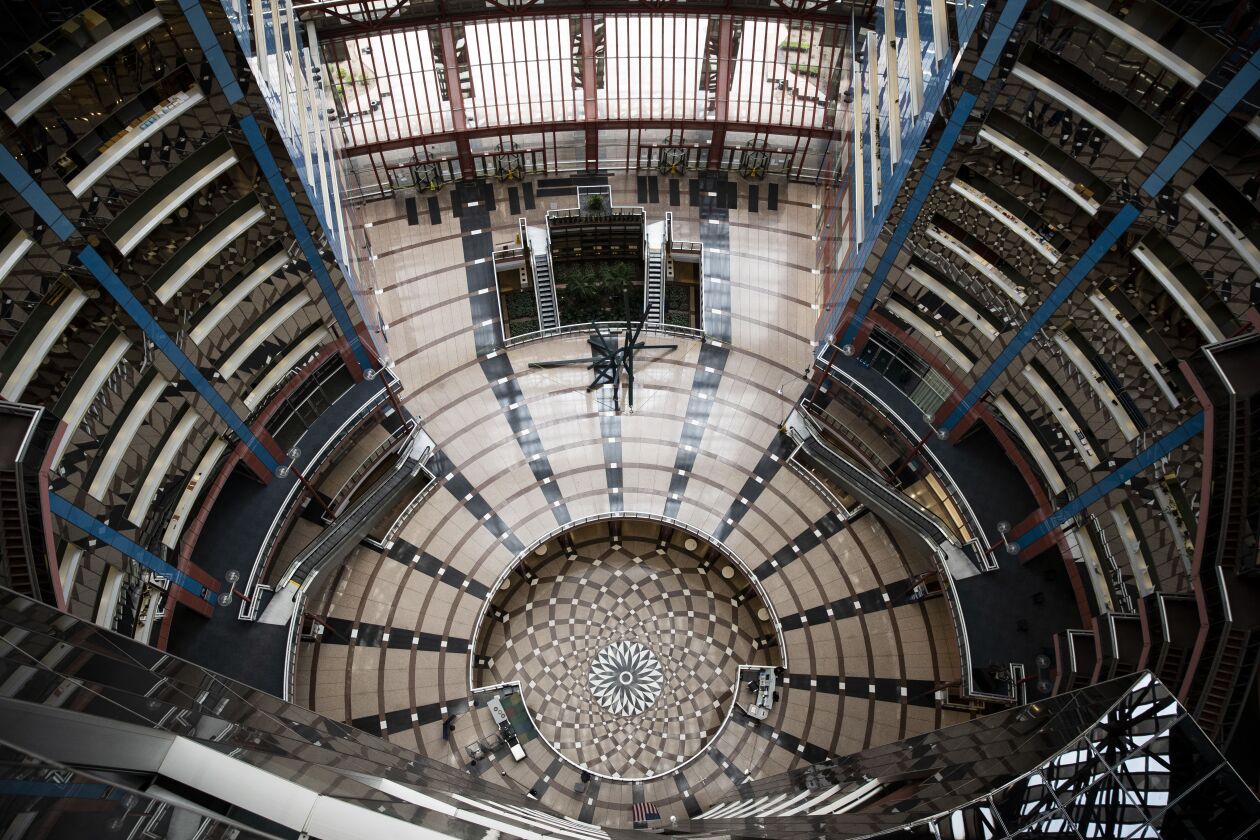Love it, hate it or walk by it with utter indifference, the James R. Thompson Center is facing a reckoning this year. Will it be saved, adapted, torn down or, if the market casts a cloud over its shimmering glass skin, will it fall into neglect?
Each one of those questions contains a host of others. Whatever happens to the building, state government’s base in Chicago since 1985, will influence the future of the Central Loop.
It occupies a full block in a part of town that usually exhibits Chicago’s economic muscle but lately has come down with cramps. The vintage office buildings lack the floor-to-ceiling windows many tenants desire nowadays, so some marquee names such as BMO Harris and Bank of America have chosen new West Loop homes in towers designed at least partly to their specifications.
The Central Loop was having trouble even before last summer’s disturbances made workers glad the pandemic was keeping them at home.
Preservationists have argued for saving the Thompson Center, the work of architect Helmut Jahn, as something innovative and public-spirited. Under Gov. J.B. Pritzker, the state of Illinois has shown no sentimental attachment, repeatedly calling the building “oversized, outdated and expensive.”
In January, as if to demonstrate that government can think long term while buried in fiscal and health crises, the state announced it was joining the march to the West Loop, buying a tower at 555 W. Monroe St. for $73.25 million. The plan is to move state workers from the Thompson Center, 100 W. Randolph St., and seven leased properties in the Loop starting in April.
Also in April, the state plans to advertise for Thompson Center offers, its formal “request for proposals,” said Marjani Williams, spokeswoman for the state’s Department of Central Management Services. The agency handles state property. The responses will indicate who is interested in the site and how much they might be willing to pay. The administration wants a sale by April 2022.
Some elected officeholders will move across the street to the Michael A. Bilandic Building, also a notable work of architecture, but easier to adapt. CMS has said selling the Thompson Center gets it out of $325 million in deferred maintenance. Furthermore, the building’s energy usage was twice that of similar downtown structures, according to a consultant’s report to the state.
Williams said the state “is not promoting demolition of the building.” But it’s clear the state is interested in getting the most money possible. The old “highest and best use” rules of real estate apply.
“The JRTC property is a full, prime, square block in the middle of the Chicago Central Business District, adjacent to one of the busiest CTA stations and near the Riverwalk, and the proposed sale represents an opportunity of a lifetime for a developer,” Williams said.
Yes, someone can erect a legacy across the street from City Hall. But this is a tough situation. Anyone who builds new will need to preserve the building’s Clark-Lake stop that serves six CTA L lines. The city, not the state, ultimately controls new construction via its power over zoning and permits.
In early 2020, Mayor Lori Lightfoot’s planning commissioner expressed intrigue with the idea of saving the building. “I’m absolutely fascinated by the Thompson Center question and the idea that a post-modern icon is now considered historic,” Maurice Cox said.
Icon or not, the building will be preserved only if it might pay off. The group Landmarks Illinois, which has put the Thompson Center on its “most endangered” lists, has worked with Jahn on a proposal for grafting a tower onto the southwestern part of the block, opening its signature atrium to the outdoors.
Jahn sent me a proposal in late 2019 for adapting the building for commercial uses or “co-living” apartments. He understandably wants to save his creation and has been a good sport with critics. But any plans to build on the site run into a pandemic that has ransacked assumptions about commercial and residential demand downtown. One leading developer told me the office tower under construction at Wolf Point will be the last such action downtown sees for a few years.
As for the Thompson Center’s prospects as is, consider this from Derrick Johnson, senior vice president at Zeller and president of the office landlords’ trade group, the Building and Managers Association of Chicago. He said: “I’ve been on other groups that have different perspectives than we do ... and I would say that a lot of people, especially in the hospitality industry, would like to see that be the casino.”
Slots in the food court? High stakes blackjack in the governor’s suite? One person’s solution sounds like another’s satire.






